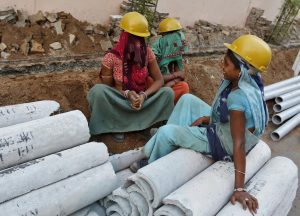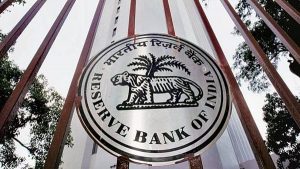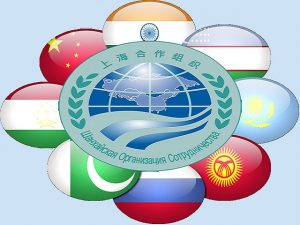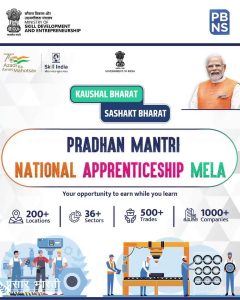Today Current Affairs:16th June 2022 for UPSC IAS exams, State PSC exams, SSC CGL, State SSC, RRB, Railways, Banking Exam & IBPS, etc
Table of Contents
Periodic Labour Force Survey (PLFS) 2020-21:

As per the Periodic Labour Force Survey (PLFS) for 2020-21 released by the Ministry of Statistics and Programme Implementation, the unemployment rate saw a decrease of 0.6% and fell to 4.2% in 2020-21, compared with 4.8% in 2019-20
- Data show the rate of joblessness fell to 4.2% in 2020-21, compared with 4.8% earlier
- Rural areas recorded an unemployment rate of 3% and urban areas recorded an unemployment rate of 6.7%.
- The Labour Force Participation Rate (LFPR)e., the percentage of persons in the labour force (that is, working or seeking work or available for work) in the population was 41.6% during 2020-21 (higher than 40.1% in 2019-20).
- All-India female labour force participation rate (LFPR) in usual status has increased from 2.3% in 2021 to 25.1% as compared to 22.8% a year ago
- Worker Population Ratio (the number of employed people per thousand people) was 39.8% (an increase from 38.2% of the previous year)
- The migration rate, according to the survey, is 28.9%. The migration rate among women was 48% and 47.8% in rural and urban areas, respectively.
- Migrants are defined as a household members whose last usual place of residence, at any time in the past, was different from the present place of enumeration.
- Employment-related migration: 4.4% of migration happened due to employment, which is a drastic reduction from the 10% in 2011
- During the pandemic, reverse migration led to a higher rate of unemployment agglomeration in rural areas, which caused rural distress. However, the annual report on the unemployment rate shows a contradiction.
- The National Statistical Office (NSO) uses “rotational panel sampling design” in urban areas to assess the Labour Force Participation Rate (LFPR), Worker Population Ratio (WPR) and the unemployment rate, and visits selected households in urban areas four times. There was, however, no revisit for the rural samples.
- Overall, the report suggests shifting the government’s policy directions as it has become more rural-centric.
- Creation of rural jobs other than in the agricultural sector and MGNREGA (Mahatma Gandhi National Rural Employment Guarantee Act) could be priorities for the government at the Union and State levels.
India, Israel, The US, UAE Are Participating In The I2U2 Summit:

The US President will host a virtual summit with the Prime Minister of India, Israel Prime Minister and UAE President during his visit to West Asia from July 13 to 16. The new grouping will be called “I2U2” — “I” for India and Israel and “U” for the US and UAE.
I2U2 Grouping:
- Previously called, the ‘International Forum for Economic Cooperation, the group is already being dubbed the ‘New Quad’ or the ‘Middle-Eastern Quad’ along the lines of the Quadrilateral Security Dialogue (QSD).
Quadrilateral Security Dialogue (QSD):
- The QSD often called the ‘Quad’ is a strategic dialogue between the United States, India, Japan and Australia.
- The dialogue was started in 2007 in response to increasing Chinese aggression in the South China Sea and was accompanied by one of the largest joint military exercises of the modern era, the Malabar Exercise.
Neobanks:

The RBI (Reserve Bank of India) is taking a hard look at the neobank business model where fintechs plug into a conventional bank’s network and become customer-facing banking service providers.
- The concern is that the digital model business can scale up very fast and could grow to be bigger than the underlying bank in terms of customers.
- Although neobank customers continue to be accountholders of the underlying bank, the only channel available to these users is the fintech-owned digital platform.
- A neobank is a kind of digital bank without any branches. Rather than being physically present at a specific location, neobanking is entirely online.
- Neobanks are financial institutions that give customers a cheaper alternative to traditional banks.
- They leverage technology and artificial intelligence to offer personalised services to customers while minimising operating costs.
- Neobanks entered the financial system with the tag of ‘challenger banks’ because they challenged the complex infrastructure and client onboarding process of traditional banks.
- In India, these firms don’t have a bank licence of their own but rely on bank partners to offer licensed services.
- That’s because the RBI doesn’t allow banks to be 100% digital yet.
- The RBI remains resolute in prioritising banks’ physical presence, and has spoken about the need for digital banking service providers to have some physical presence as well.
- RazorpayX, Jupiter, Niyo, Open,etc are the examples of top Neobanks of India.
Shanghai Cooperation Organization (SCO):

The Union Cabinet was apprised about the Agreement signed among the Shanghai Cooperation Organisation (SCO) member states on cooperation in the field of youth work among the authorized bodies of the member states of SCO.
- Following adoption of the agreement on cooperation in youth work by the member states in 2021, the agreement was signed by the Indian Minister of Youth Affairs and Sports.
Key Highlights of the Agreement:
Objective:
- To strengthen mutual trust, friendly relations and cooperation among young people of SCO member States.
- Recognizing the importance of ensuring the development of youth cooperation as an element of deepening friendly relations among the SCO Member States.
- Seeking to further improve the conditions for youth cooperation based on international experience.
- Strengthen cooperation in the field of work with youth and public youth organizations (associations) implementing state youth policy,
- Support initiatives aimed at enhancing international youth cooperation,
- Training of professional staff in the sphere of work with youth,
- Exchange of scientific, reference and methodological materials, work experience of state bodies, youth public organizations, other organizations and associations involved in the implementation of state youth policy and support of youth initiatives,
- Carrying out joint research and activities on various youth policy issues and youth cooperation,
- Exchange of scientific publications, research works on topical issues of preventing youth involvement in destructive structures,
- Promote joint economic and humanitarian initiatives aimed at engaging youth in entrepreneurship and innovative projects to increase their employment and well-being,
- Supporting the activities of the SCO Youth Council.
- The SCO Youth Council was created in 2009 at the initiative of the Youth Organizations of the SCO member states.
World Elder Abuse Awareness Day:

On the eve of World Elder Abuse Awareness Day (WEAAD – 15th June), the Social Justice and Empowerment Ministry has released a report on the state of Elderly People in India.
- The report was based on a survey conducted by a Non-Governmental Organisation across 22 cities.
- WEAAD occurs every year on 15th June.
- It was officially recognized by the United Nations General Assembly in its resolution 66/127 in 2011.
- Theme for 2022: Digital Equity for All Ages.
- Aim:
- To raise awareness about the plight of elderly people who are abused and harmed.
- The primary goal is to develop a better understanding of elder abuse and neglect by raising awareness about the cultural, social, economic, and demographic factors that influence such abuse and neglect.
Highlights of the Report:
- India has shown that 47% of elderly people are economically dependent on their families for income and 34% relied on pensions and cash transfers, while 40% of the surveyed people have expressed a desire to work “as long as possible”.
- 71% of senior citizens were not working, while 36% were willing to work and 40% wanted to work “as long as possible”.
- As much as 30% of the elders were willing to volunteer their time for various social causes.
- 87% elders reported there is availability of healthcare facilities nearby, however 78% elders mentioned unavailability of app-based online healthcare facilities and a significant 67% elderly reported they do not have any health insurance at this critical stage in their lives and only 13% are covered under government insurance schemes.
- 59% of elders felt that elder abuse was “prevalent” in society, but 10% reported being victims themselves.
Lumpy Skin Disease:

Around 1,229 cattle across five districts of Gujarat have been infected with Lumpy Skin Disease (LSD).
Lumpy Skin Disease:
- LSD is caused by infection of cattle or water buffalo with the poxvirus Lumpy Skin Disease Virus (LSDV).
- According to the Food and Agriculture Organization (FAO), The mortality rate is less than 10%.
- Lumpy skin disease was first seen as an epidemic in Zambia in 1929. Initially, it was thought to be the result of either poisoning or hypersensitivity to insect bites.
- Lumpy skin disease is primarily spread between animals by biting insects (vectors), such as mosquitoes and biting flies.
- Symptoms:
- It primarily consists of fever, fluid excretion from eyes and nose, dribbling of saliva from the mouth and blisters on the body.
- The animal stops eating and faces problems while chewing or eating, resulting in reduced milk production.
- Prevention and Treatment:
-
- Vaccination against these diseases is covered under the Livestock Health and Disease Control Programme of India.
- There are no specific antiviral drugs available for the treatment of lumpy skin disease.
- The only treatment available is supportive care of cattle.
- This can include treatment of skin lesions using wound care sprays and the use of antibiotics to prevent secondary skin infections and pneumonia.
Intensified Diarrhoea Control Fortnight (IDCF)-2022:

Union Minister for Health launched the Intensified Diarrhoea Control Fortnight (IDCF)-2022. IDCF programme is being implemented from 13th June to 27th June, 2022 in the States/UTs.
- The Intensive Diarrhoea Control Fortnight (IDCF) is being organized since 2014 with an objective to ‘bringing the number of deaths due to diarrhoea in childhood to zero’.
- This fortnight is organized especially during summer/monsoon so that preventive measures can be taken such as awareness generation and establishment of ORS-Zinc corners.
- According to the latest report of SRS-2019, child mortality rate in the country has come down from 45 per 1000 live births in 2014 to 35 per 1000 live births in 2019.
- But even today, diseases related to diarrhoea continue to be a major cause of death in children under the age of five.
- According to NFHS-5, only 60.6% children under the age of five with diarrhoea were given ORS and only 30.5% were given zinc.
- This means that there is lack of awareness among mothers.
AGNIPATH Scheme:

The Union Cabinet approved an attractive recruitment scheme for Indian youth to serve in the Armed Forces. The scheme is called AGNIPATH and the youth selected under this scheme will be known as Agniveers.
- The policy, which comes into immediate effect, will hereafter govern the enrolment for the three services.
- Under the AGNIPATH scheme, the Agniveers will be enrolled in the Forces under respective Service Acts for a period of four years.
- They would form a distinct rank in the Armed Forces, different from any other existing ranks.
- During this period of service to the nation, the Agniveers will be imparted with various military skills and experience, discipline, physical fitness, leadership qualities, courage and patriotism.
- Post this stint of four years, the Agniveers will be infused into the civil society where they can contribute immensely towards the nation building process.
- Upon the completion of four years of service, Agniveers will be offered an opportunity to apply for permanent enrolment in the Armed Forces.
- Enrolment will be based on ‘All India All Class’ basis and the eligible age will be in range from 17.5 to 21 years.
- Agniveers will be given an attractive customised monthly package along with Risk and Hardship allowances as applicable in the three services.
- On completion of the engagement period of four years, Agniveers will be paid one time ‘Seva Nidhi’ package which shall comprise their contribution including accrued interest thereon and matching contribution from the Government.
- The ‘Seva Nidhi’ will be exempt from Income Tax.
- Agniveers will be provided non-contributory Life Insurance Cover of Rs 48 lakhs for the duration of their engagement period in the Indian Armed Forces.
Pradhan Mantri National Apprenticeship Mela:

Pradhan Mantri National Apprenticeship Mela was organised across 200 locations across India on June 13th, 2022.
- The Ministry of Skill Development and Entrepreneurship will be organising the Pradhan Mantri National Apprenticeship Mela every month now on.
- It’s objective is to connect the youth with more opportunities of on-ground training within corporates and further a chance to get employment.
- Individuals having a 5th–12th grade pass certificate, a skill training certificate, an ITI Diploma, or a graduate degree can apply for an interview across these trades/opportunities.
- The candidates will be given a choice of 500+ trades, including welders, electricians, housekeepers, beauticians, mechanics, and others.
- Candidates will also receive Apprenticeship certificates recognised by the National Council for Vocational Education and Training (NCVET) at the end of their training period, which will give them industry recognition.
- A credit bank concept will also be introduced soon, with a depositary of various credits accumulated by learners that can be used for future academic pathways.
Type Certificate (TC) Under Drone Rules, 2021:

Union Minister of Civil Aviation awarded the first Type Certificate (TC) under Drone Rules, 2021 to IoTechWorld Avigation Pvt Ltd.
- The Gurugram based company was established in April 2017 and is one of India’s leading manufacturers of kisan drones.
- IoTech has received the Type Certificate in barely 34 days after submission of its online application on the DGCA’s DigitalSky Platform on 11 May 2022.
- This is despite the fact that the Drone Rules, 2021, allow 60 days to Quality Council of India (QCI) or the Certification Bodies (CB) and 15 days to DGCA for issuing the Type Certificate (i.e 75 days in total).
- The Drone Rules, 2021 were notified on 25 Aug 2021 and the ‘Certification Scheme for Unmanned Aircraft Systems (CSUAS)’ for obtaining Type Certificate (TC) for drones was notified on 26 Jan 2022.
- The drone certification scheme of January 2022 was developed by the Quality Council of India (QCI).




